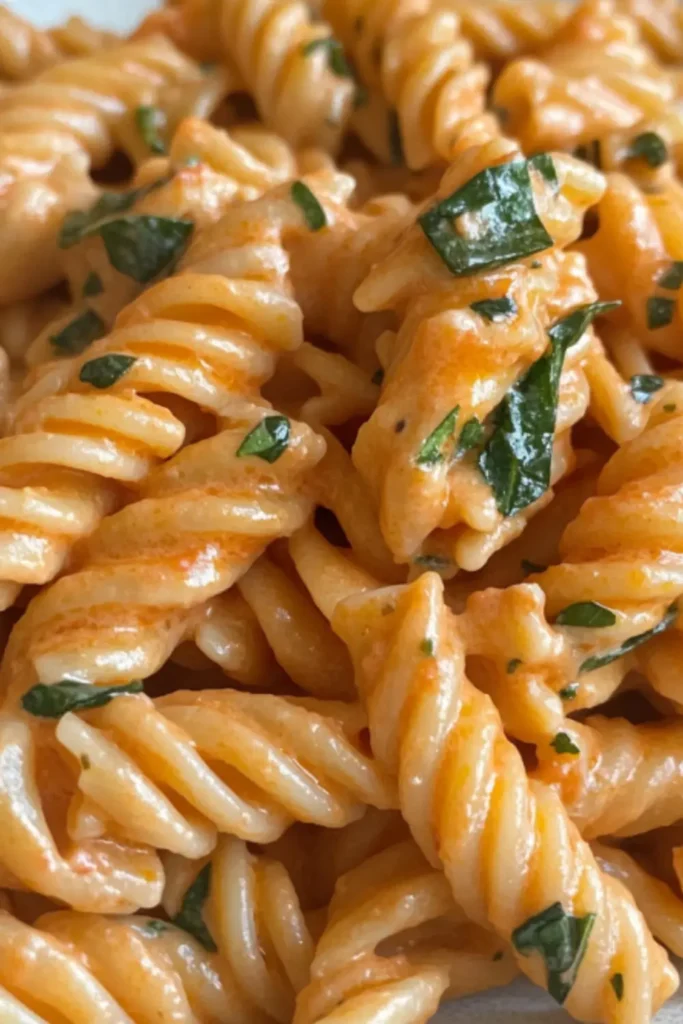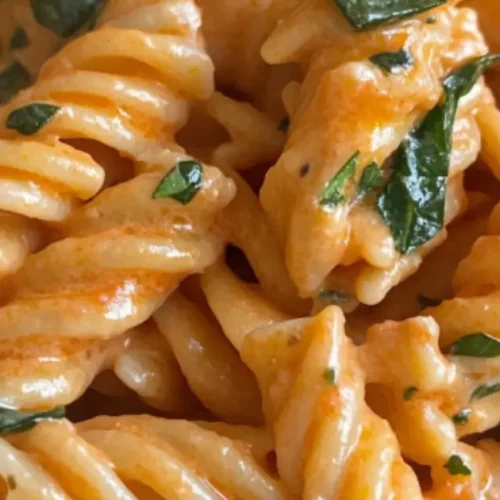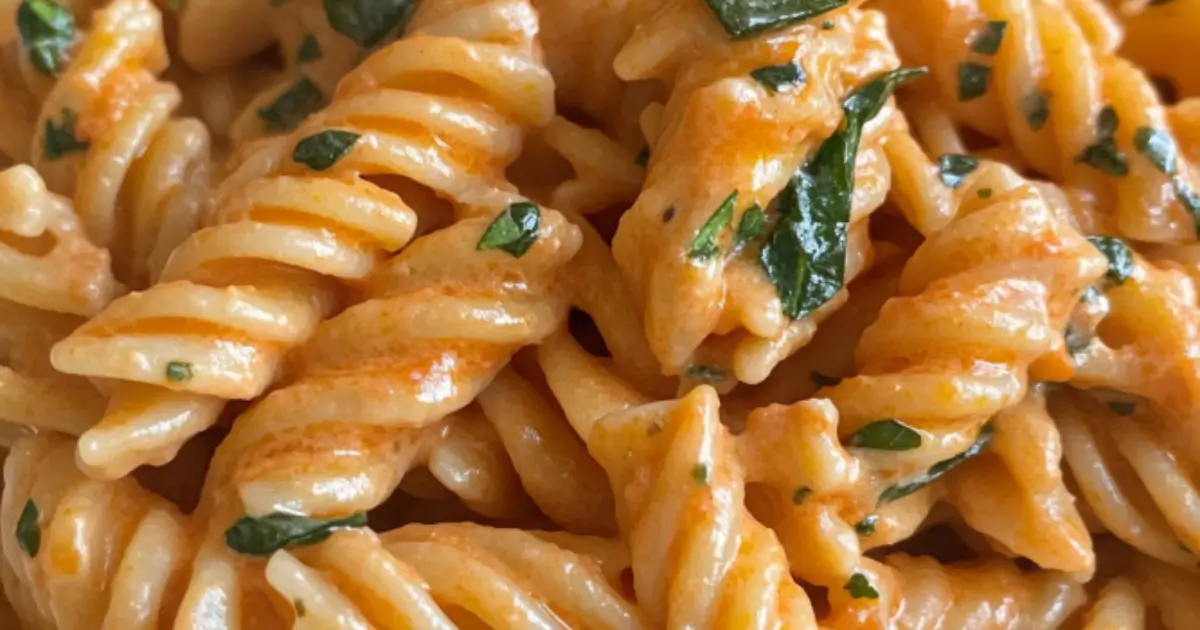The smell of tomatoes, garlic, and herbs fills your kitchen. A good pasta sauce does more than cover noodles—it adds comfort and flavor. Making your own lets you choose what goes in and make it just the way you like.
Why We Love This Pasta Sauce Recipe
Crafting your own sauce at home is more than just cooking. It’s about quality and customization. Here’s why you’ll find yourself reaching for this recipe again and again:
- Affordable and Accessible: Uses pantry staples already in your kitchen
- Flavorful and Fresh: Tastes better than store-bought versions
- Freezer-Friendly: Make once, enjoy for weeks
- Customizable: Easily adjust for dietary needs or personal taste
- Nutritious: No preservatives, low sugar, and packed with natural flavor

Ingredients
Olive oil – Essential for building flavor in your pasta sauce. It helps soften the aromatics and gives the sauce richness. Avoid substituting with butter or another oil if you’re aiming for a classic Italian base.
Onion – Finely chopped onion is a flavor foundation for pasta sauce. It adds sweetness and depth. Yellow or white onions work best here.
Garlic – Fresh minced garlic brings sharp, aromatic intensity to your pasta sauce. Jarred garlic doesn’t give the same bold flavor and should be avoided.
Crushed tomatoes – This is the heart of your pasta sauce. Use high-quality canned crushed tomatoes for a smooth texture and robust flavor. Avoid diced tomatoes, as they won’t break down the same way.
Tomato paste – Intensifies the tomato flavor and thickens the pasta sauce. Don’t skip it—it gives that rich, slow-cooked taste even in a short simmer.
Sugar – Balances acidity from the tomatoes. Just a small amount rounds out the flavor without making the pasta sauce sweet.
Each ingredient has a role. The oil carries flavor. The onion and garlic create the base. Tomatoes bring body. Herbs deliver aroma. Don’t skip the sugar—it balances the acidity without making the sauce sweet.
How to Make Homemade Pasta Sauce
Start with Aromatics: Heat olive oil in a large pan over medium heat. Add chopped onions and cook until soft and translucent (about 5 minutes).
Add Garlic: Stir in the minced garlic and cook for another minute. Don’t let it burn.
Cook Tomato Paste: Mix in the tomato paste and cook for 2-3 minutes. This caramelizes the paste, enhancing the sauce’s depth.
Build the Sauce: Add crushed tomatoes, sugar, salt, pepper, oregano, and basil. Stir well.
Simmer Slowly: Lower the heat and let the sauce simmer uncovered for 25-30 minutes. Stir occasionally to prevent sticking.
Taste and Adjust: Add more herbs, salt, or a pinch of sugar as needed.
Finish with Fresh Basil: Before serving, stir in torn fresh basil for brightness.
This simple process brings out the natural sweetness of the tomatoes while layering in savory complexity.
Expert Tips for the Best Pasta Sauce
You don’t need culinary school to elevate your sauce. Just follow these tips:
- Use Quality Tomatoes: Look for San Marzano or Italian-style crushed tomatoes.
- Let It Sit: If you have time, let the sauce rest after cooking. Flavors intensify as it cools.
- Avoid Overcooking: Simmer gently. Overcooking can make the sauce too thick or bitter.
- Add Umami: A parmesan rind or a splash of soy sauce (yes, really) adds unexpected richness.
- Reserve Pasta Water: A ladle of starchy pasta water helps the sauce cling to the noodles.
These subtle changes make a noticeable difference, giving your sauce a restaurant-level finish.
Pasta Sauce Variations to Try
Regional Styles:
- Marinara: Skip the tomato paste and cook for just 15 minutes. Bright, quick, and ideal for light pasta.
- Bolognese-Inspired: Add cooked ground beef or turkey and a touch of nutmeg for a heartier meal.
- Arrabbiata: Add extra red pepper flakes for a spicy kick.
- Creamy Tomato Sauce: Stir in a splash of cream or a dairy-free alternative for a silky texture.
Dietary Modifications:
- Vegan-Friendly: Stick to plant-based ingredients. Consider nutritional yeast for a cheesy note.
- Low-Sodium: Use no-salt-added tomatoes and adjust seasoning gradually.
- Gluten-Free: Naturally gluten-free, just pair with gluten-free pasta or zoodles.
These variations keep your weekly meals exciting while catering to different needs.
Serving Suggestions for Pasta Sauce
Make Every Meal Complete
This pasta sauce goes far beyond spaghetti. Try these ideas:
- Serve over rigatoni, penne, fettuccine, or gluten-free pasta
- Use as a dipping sauce for breadsticks or roasted veggies
- Spread on flatbread or as a pizza base
- Layer into lasagna or baked ziti
- Drizzle over grilled vegetables or quinoa bowls
Garnish with fresh herbs, a sprinkle of cheese, or crushed red pepper for a personal touch. Pair with a simple green salad or roasted garlic bread for a balanced plate.
FAQs About Pasta Sauce
What is the secret to a good pasta sauce?
The secret lies in building layers of flavor. Start with aromatics, cook tomato paste for richness, and let it simmer low and slow.
Can I use fresh tomatoes instead of canned?
Yes. Use about 10-12 peeled and chopped fresh tomatoes. You may need to cook longer to reduce excess water.
How do I make my pasta sauce thicker?
Simmer uncovered to evaporate liquid or add a bit more tomato paste.
Is pasta sauce gluten-free?
Most homemade pasta sauces are naturally gluten-free. Always double-check any packaged ingredients.

pasta sauce
Equipment
- Large Pan
- Wooden Spoon
Ingredients
- 2 tablespoons olive oil
- 1 medium onion finely chopped
- 4 cloves garlic minced
- 1 can (28 oz) crushed tomatoes
- 2 tablespoons tomato paste
- 1 teaspoon sugar
- 1 teaspoon salt
- 0.5 teaspoon black pepper
- 1 teaspoon dried oregano
- 0.5 teaspoon dried basil
- fresh basil leaves for garnish
Instructions
- Heat olive oil in a large pan over medium heat. Add chopped onion and sauté until soft and translucent, about 5 minutes.
- Add minced garlic and cook for another minute, stirring to avoid burning.
- Stir in tomato paste and cook for 2-3 minutes to caramelize.
- Add crushed tomatoes, sugar, salt, pepper, oregano, and dried basil. Stir to combine.
- Lower the heat and let the sauce simmer uncovered for 25-30 minutes, stirring occasionally.
- Taste and adjust seasonings if needed. Stir in fresh basil before serving.
Send me this recipe!
Just enter your email below and get it sent straight to your inbox!



